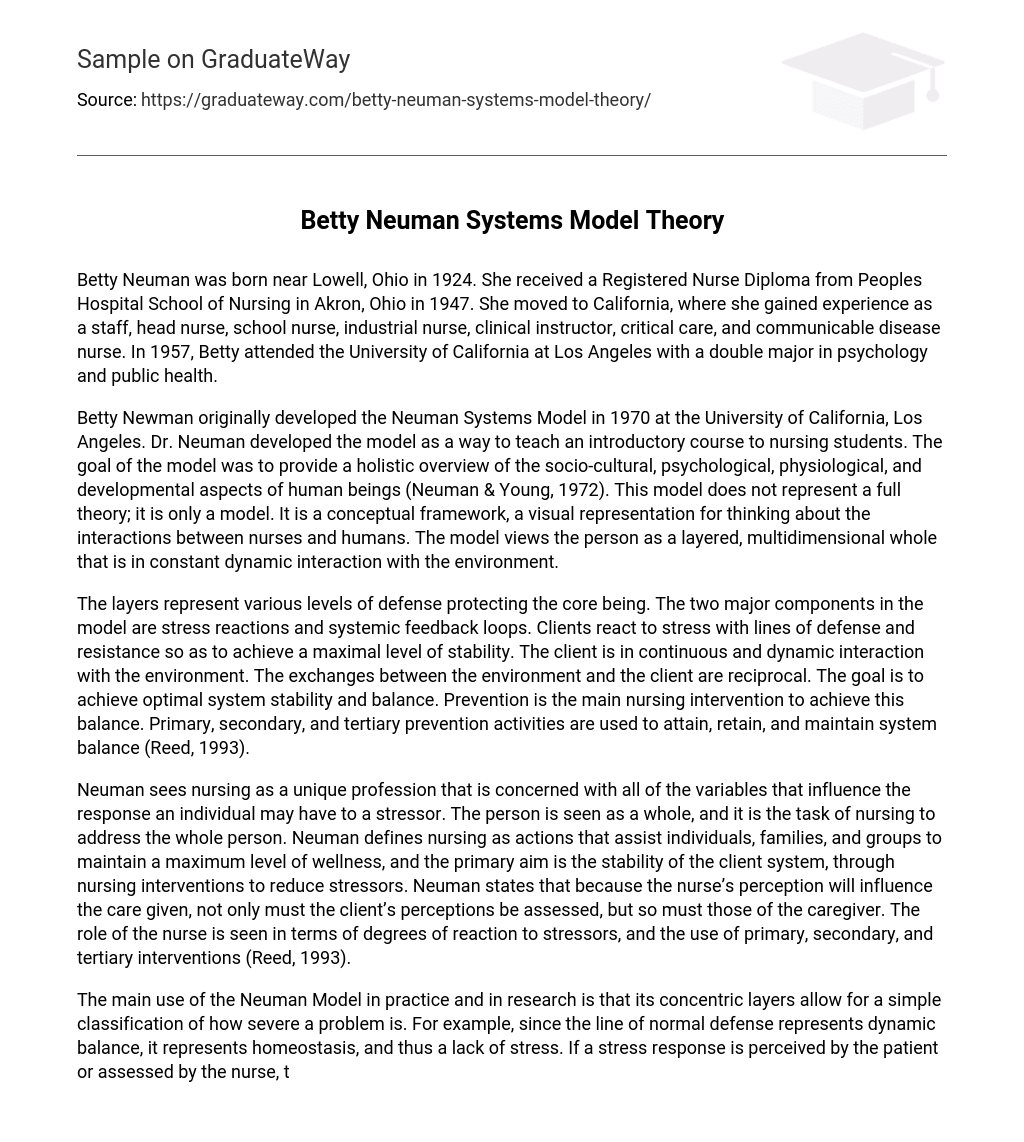Betty Neuman, born in 1924 near Lowell, Ohio, received a Registered Nurse Diploma from Peoples Hospital School of Nursing in Akron, Ohio in 1947. She then relocated to California and occupied various nursing roles including staff nurse, head nurse, school nurse, industrial nurse, clinical instructor, critical care nurse, and communicable disease nurse. In 1957, Betty joined the University of California, Los Angeles to pursue a double major in psychology and public health.
Betty Newman created the Neuman Systems Model in 1970 for teaching nursing students at the University of California, Los Angeles. The model’s purpose is to conduct a comprehensive evaluation of individuals’ socio-cultural, psychological, physiological, and developmental factors (Neuman & Young, 1972). Rather than being an extensive theory, this model acts as a conceptual framework and visual illustration for comprehending the links between nurses and individuals. It regards individuals as complex entities with various layers that continually interact with their surroundings.
The model represents layers that defend the core being and consist of stress reactions and systemic feedback loops. Clients use lines of defense and resistance to react to stress for stability. The client interacts continuously with the environment, with reciprocal exchanges. The aim is to achieve optimal system stability and balance. Nursing intervenes to prevent imbalance, through primary, secondary, and tertiary prevention activities (Reed, 1993).
Neuman views nursing as a distinct profession that considers all factors that can affect an individual’s response to stress. The person is considered as a whole, and nursing is responsible for addressing their overall well-being. According to Neuman, nursing involves actions that help individuals, families, and groups maintain optimal wellness. Its main goal is to ensure stability in the client system by implementing nursing interventions to reduce stressors. Neuman emphasizes that the nurse’s perception plays a significant role in care delivery, so both the client’s and caregiver’s perceptions must be evaluated. The nurse’s role is determined by their reactions to stressors and the use of primary, secondary, and tertiary interventions (Reed, 1993).
The Neuman Model is commonly used in practice and research to classify the severity of a problem based on its concentric layers. The line of normal defense represents dynamic balance and homeostasis, indicating a lack of stress. If a patient perceives or a nurse assesses a stress response, it means that the normal line of defense has been invaded and the flexible line of defense has greatly contracted. Infections or other invasions of the lines of resistance indicate failure of both defense lines. The level of insult can be measured, allowing for graduated interventions. Additionally, each person variable can be prepared and analyzed in relation to the normal line of defense or stress response. However, a drawback is that it is unknown whether our preparation of person variables accurately represents the underlying theoretical structures (Neuman & Young, 1972).
References
- Neuman, B. & Young, R. (1972). A model for teaching total person approach to patient problems. Nursing Research, 21, 264-269
- Reed, K. (1993). Betty Neuman: The Neuman Systems Model. London: Sage Publication.





